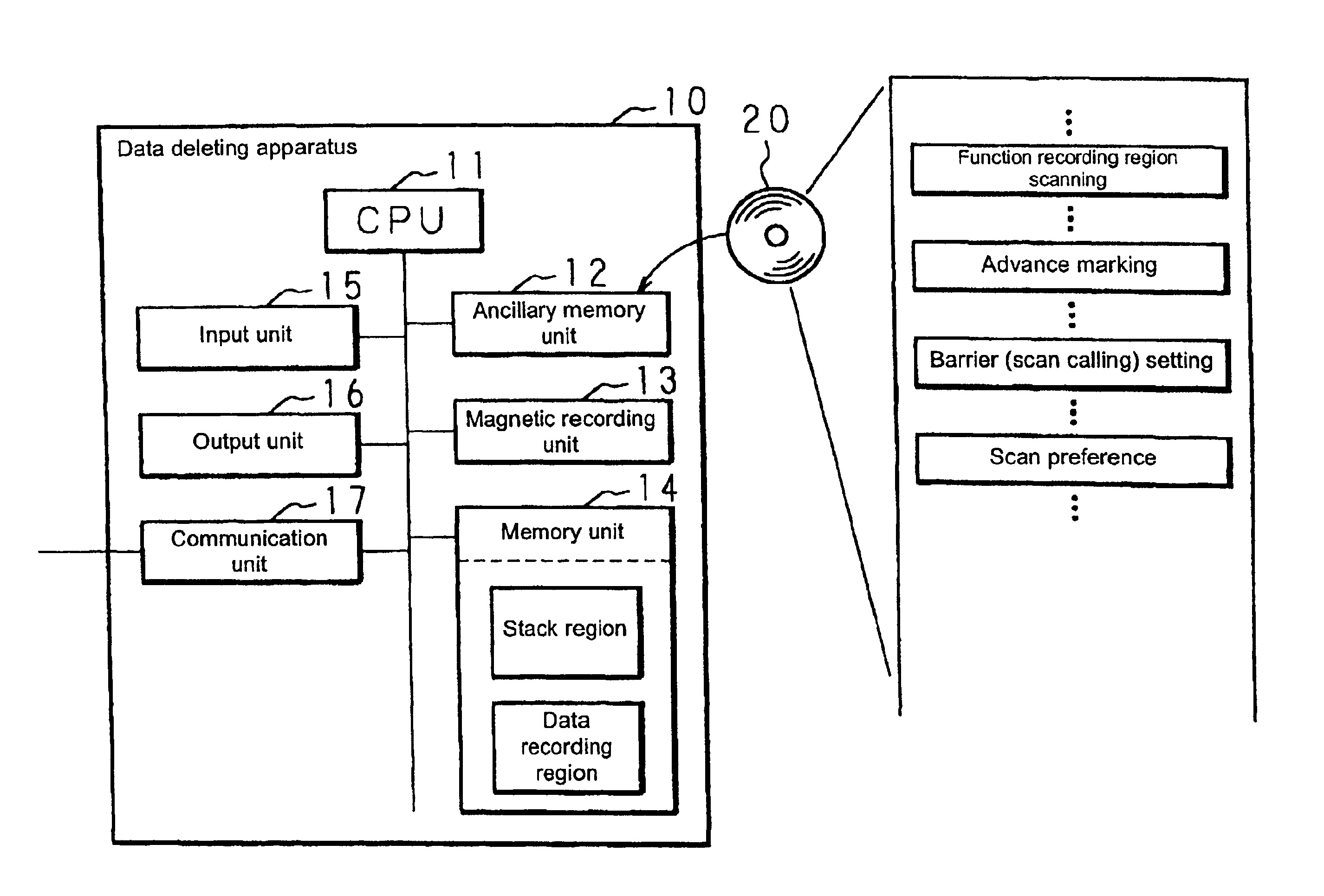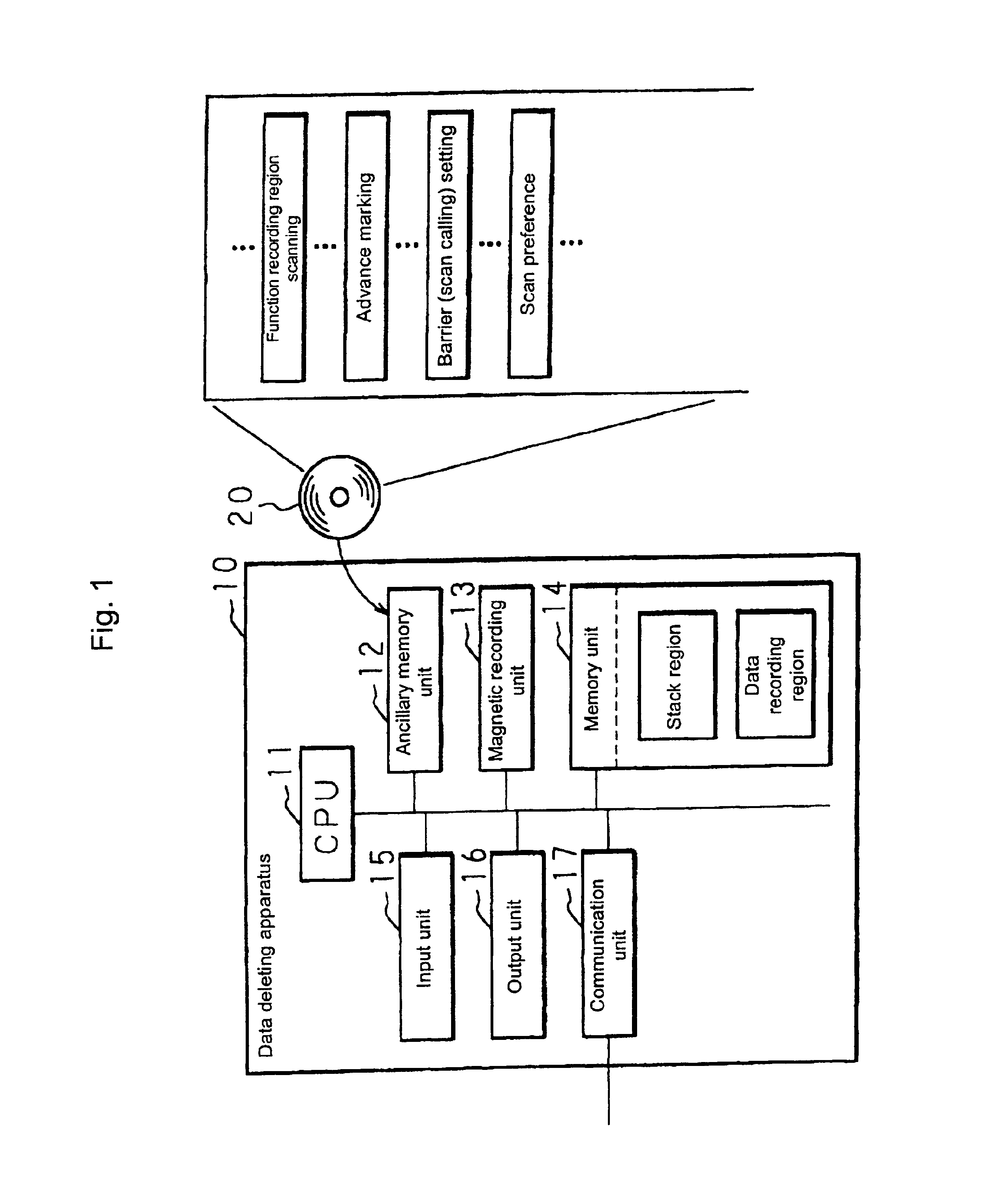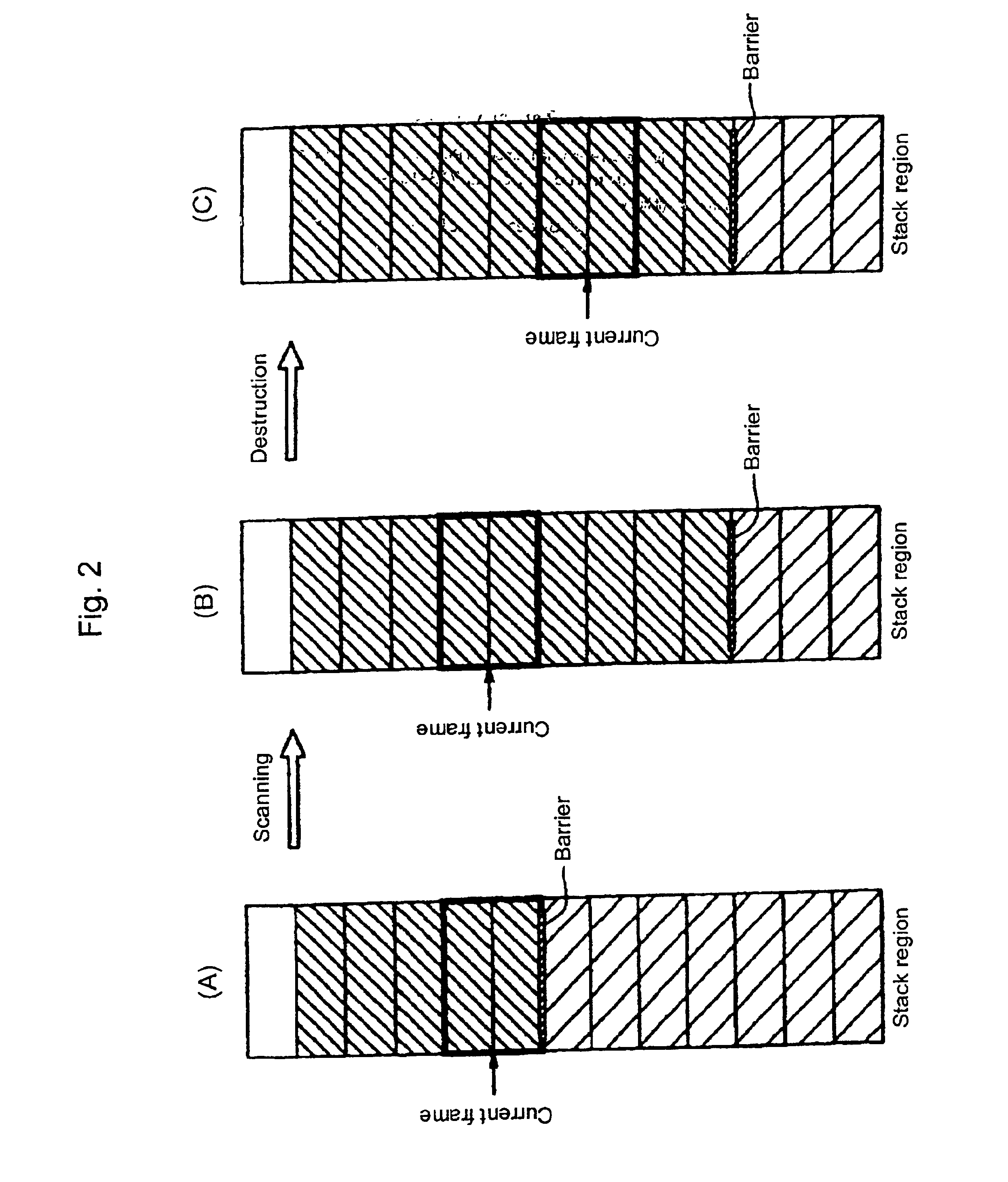Method and apparatus for garbage collection using advanced marking techniques and restricted barrier to protect the data
a technology of advanced marking and garbage collection, applied in the field of garbage collection methods and apparatuses, can solve the problems of large overhead costs, difficult practical application as a general use device, and the need to add or secure hardware resources, etc., and achieve the effect of generating process abnormalities
- Summary
- Abstract
- Description
- Claims
- Application Information
AI Technical Summary
Benefits of technology
Problems solved by technology
Method used
Image
Examples
Embodiment Construction
[0062]The following describes the present invention in detail based on the drawings illustrating embodiments thereof FIG. 1 is a block diagram showing the structure of a data deleting apparatus of the present invention. In this diagram 10 is the data deleting apparatus used in a general use computer of the present invention, and the data deleting apparatus 10 comprises auxiliary recording unit 12 such as a CD-ROM drive or the like which reads information such as programs and data from the recording medium 20 which may be a CD-ROM or the like having information such as programs and data for the data deleting apparatus of the present invention recorded thereon; a magnetic recording unit 13 such as a hard disk and the like for recording information such as programs, data or the like which was read by the auxiliary recording unit 12; and a memory unit 14 for temporarily recording each type of information.
[0063]Further, in addition to information such as the programs and the data for the...
PUM
 Login to View More
Login to View More Abstract
Description
Claims
Application Information
 Login to View More
Login to View More - R&D
- Intellectual Property
- Life Sciences
- Materials
- Tech Scout
- Unparalleled Data Quality
- Higher Quality Content
- 60% Fewer Hallucinations
Browse by: Latest US Patents, China's latest patents, Technical Efficacy Thesaurus, Application Domain, Technology Topic, Popular Technical Reports.
© 2025 PatSnap. All rights reserved.Legal|Privacy policy|Modern Slavery Act Transparency Statement|Sitemap|About US| Contact US: help@patsnap.com



